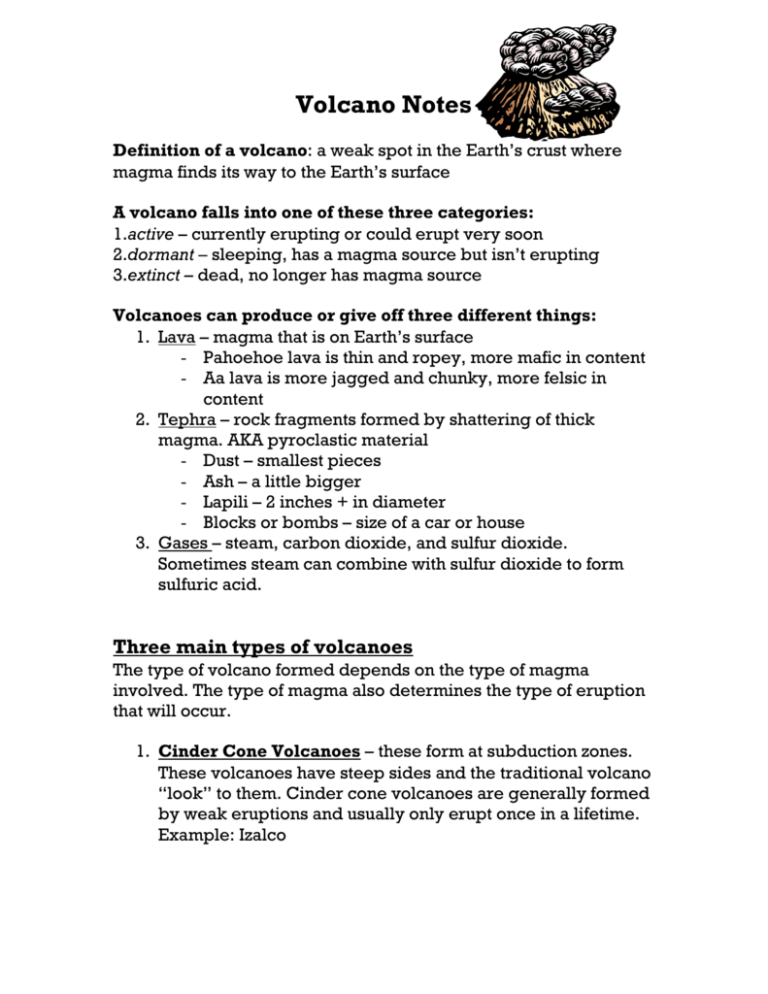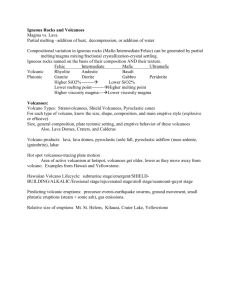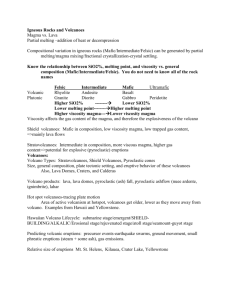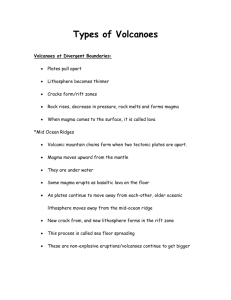Volcano Notes
advertisement

Volcano Notes Definition of a volcano: a weak spot in the Earth’s crust where magma finds its way to the Earth’s surface A volcano falls into one of these three categories: 1.active – currently erupting or could erupt very soon 2.dormant – sleeping, has a magma source but isn’t erupting 3.extinct – dead, no longer has magma source Volcanoes can produce or give off three different things: 1. Lava – magma that is on Earth’s surface - Pahoehoe lava is thin and ropey, more mafic in content - Aa lava is more jagged and chunky, more felsic in content 2. Tephra – rock fragments formed by shattering of thick magma. AKA pyroclastic material - Dust – smallest pieces - Ash – a little bigger - Lapili – 2 inches + in diameter - Blocks or bombs – size of a car or house 3. Gases – steam, carbon dioxide, and sulfur dioxide. Sometimes steam can combine with sulfur dioxide to form sulfuric acid. Three main types of volcanoes The type of volcano formed depends on the type of magma involved. The type of magma also determines the type of eruption that will occur. 1. Cinder Cone Volcanoes – these form at subduction zones. These volcanoes have steep sides and the traditional volcano “look” to them. Cinder cone volcanoes are generally formed by weak eruptions and usually only erupt once in a lifetime. Example: Izalco 2. Composite Volcanoes – these are formed by a combination of both types of lava. These volcanoes give off pyroclastic material and have extremely explosive eruptions. Composite cones are the most common kind of volcano. Example: Mount St. Helens 3. Shield Volcanoes – these look like an ancient shield placed flat on the ground. It is composed of thinner more mafic lavas. Shield volcanoes have gentle and gradual eruptions. These erupt the most often. Example: Kilauea Other formations: Caldera – large crater-shaped basin that results from a big volcanic eruption. Lakes may be found in these. Rift Eruptions – where divergent plates are found on the ocean floor. As the plates move apart, lava is released from the inside the Earth and pillow lava is formed. Where volcanoes are found: 90% of all volcanoes are found on plate boundaries. 10% occur in areas called hot spots. Hot spots are holes in the crust where magma pushes up. Example: Hawaii What volcanoes produce: 1. Islands – Hawaii is a good example 2. Fertile soils 3. Massive destruction – tephra is given off, mudflows, tsunamis







